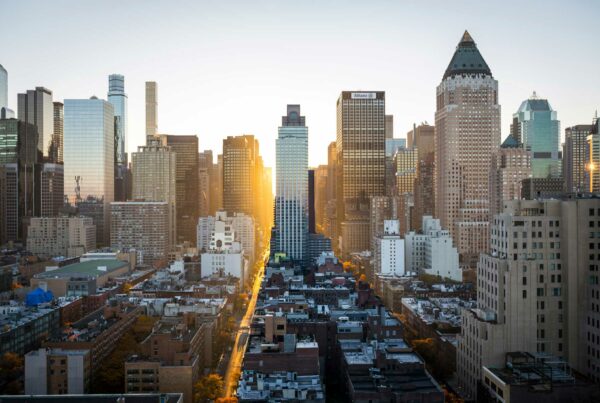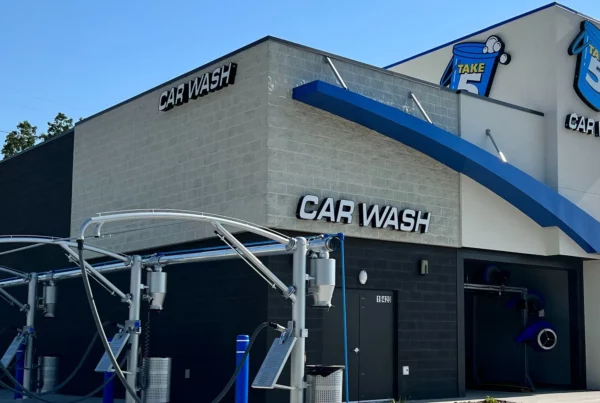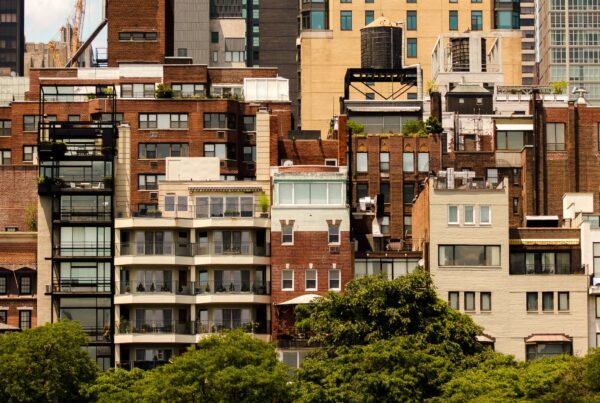Today’s Obstacles & Opportunities in NYC Multifamily
06/16/2020
In spring 2020, NYC was the national epicenter of COVID-19. And while people and the city are starting to recover, the economic and real estate impacts of the pandemic are still being felt. All property operators, sellers, and buyers are affected by recent changes and have questions about how to navigate the obstacles and opportunities of the real estate landscape right now.
Why did NYC become a hotspot? One of the city’s biggest strengths has always been its density, but when it comes to a biological foe, like COVID-19, our strength was our Achilles’ heel. Maybe the outbreak could have been prevented or slowed down, but it’s undeniable that density impacted the severity.
I recently recorded a Behind the Bricks podcast about the state of the NYC multifamily industry and you can listen here to that episode. Below, I outline the major themes we see in NYC multifamily today.
1. Collections
How will buildings operate with lower collections? Building owners in the secondary and tertiary markets need to keep a close eye on collections, especially with eviction moratoriums in place until at least August 2020. In heavily stabilized neighborhoods, we’re seeing collections as low as 60%, and more typically in the 70%-80% range. In the primary neighborhoods, collections are closer to 80-90%. Tenants employed in industries that can be done virtually are generally fairing better (such as technology workers), while those in service sector jobs have been hit hard. These tenants have to make tough financial decisions, have less of a safety net, and that impacts collections.
This is an opportunity for owners who have great tenant relationships to capitalize on those. We are noticing from many owners who have built strong tenant relationships are doing much better when it comes to collections. Many have reached out to tenants and tried to assist them through payment plans or have implemented technologies that allow people to easily pay rent on time.
From an investor standpoint, with collections being lower, cash flows are lower. If you’re purchasing during this pandemic, you’re going to buy the same building you were eyeing before, but on a lower income and possibly a lower price.
2. Renter Demand
The biggest concern in primary markets is renter demand. According to the New York Times, about 5% of NYC residents left the city between March 1 and May 1. And when it comes to the city’s wealthiest blocks, in neighborhoods like the Upper East Side, the West Village, SoHo, and Brooklyn Heights, the population decreased by 40% or more, while the rest of the city saw lower changes.
Rentals and home purchases have been increasing in the New York suburbs. People are questioning whether they need to live in their highly desirable neighborhoods once this is over. Will they risk taking the subway from that neighborhood or live closer to their jobs so they can walk? If they can work remotely forever, will there even be a need to live in the city?
With demand dropping, it may be challenging for owners in primary markets to keep their buildings rented and occupied at 100%. All NYC investors have taken for granted that the citywide vacancy rate is extremely low. Buyers would never underwrite a purchase with assumptions such as an 8% vacancy rate, because if they did, they would never win any purchase. The virus has opened up the possibility that we may go through a season where vacancy is temporarily higher.
Early indications are that NYC will have a longer renting season this year. Typically we see peak renting season in the summer from June to August. With businesses delaying their re-openings, peak renting season will be pushed back and may start in late fall or winter early and extend over a longer time period as businesses and people recover. Owners need to stay patient.
For buyers, similar to my comments about collections, if buildings in primary markets have lower occupancy, there will be lower cash flow. Buying on lower cash flow may translate into lower prices.
3. The Lending Environment
Very few businesses have underwritten and prepared financially for a pandemic. When you buy buildings in other markets around the USA, it’s typical to assume 92-95% occupancy. In NYC, however, you plan on having your building completely filled 100% of the time. COVID-19 has changed that and banks have responded by tightening their underwriting standards. As a result, there are less loan dollars available for purchases and refinancings.
On the expense side, NYC has been raising property taxes and insurance rates are rising. Some owners find themselves in a simultaneous squeeze of falling revenue, rising expenses, and fewer and more cautious lenders.
In the short term, banks are going to significantly restrict their underwriting for new loans. This is a huge opportunity for all-cash buyers. Owners and equity funds who can act quickly with “certainty of close” are going to have a strategic advantage over those buyers who need to wait for a mortgage closing. This non-financial metric will be an advantage to some buyers.
4. Retail in Pain
It’s no question that small and large retailers are struggling right now. So much of NYC’s retail is restaurants that drive the energy of the city. Plus, when a building owner loses a retail tenant, they not only lose the rent but also the portion of property taxes that the retailer pays.
The industry is going to have to work together with retailers, owners, and lenders giving restaurants and stores the flexibility to get on their feet again. This requires patience and flexibility from all participants.
Looking forward, some restaurants and retailers will not reopen. The trickle down impact of this will cause commercial vacancy to go up and rental rates to move down. Over the long term, people will be going to restaurants and stores again and the retail market will recover. NYC is a walking city, and much of the retail is “experience focused” where through eating, drinking, and shopping the people take part in city life. When this virus is over, city life will come back, it’s just going to take time. For buyers with long term plans, this should be a very good opportunity to buy mixed-use assets.
5. Investor Paralysis
Many investors, buyers, and sellers, don’t know what to do right now and are waiting until things stabilize. It’s difficult to make any decision to buy, sell, or finance an asset unless you can agree on what the building’s net operating income (NOI). If you can’t agree on a buildings’ revenue, how are you invest in its future? That creates paralysis. Some in the industry are calling this “pricing discovery.”
If you’re a buyer or seller, today requires a bigger commitment to consummate a transaction. Doing business during scary times feels uncomfortable, but we have observed that strategic purchases and sales during times of chaos can lay the seeds for great investment moves years down the line.
The Silver Lining
June 2019 was a very difficult month for NYC multifamily owners due to increased regulations. Now, a year later, all NYC residents are seeing how critical the housing sector is to the overall health of the city. As an essential service, building owners are ensuring tenants have clean buildings, building services are uninterrupted, and some have put themselves in harm’s way in by being exposed to the virus.
This event will create a need for the city and politicians to work closer with the multifamily industry than it has in the past. Understanding NYC politics is a very important component to evaluate both in buying and selling in this market.
As we move forward, the stimulus from the government will lessen the blow of this pandemic, but ultimately, it’s a biological problem that needs a biological solution. There will be unpredictable outcomes from this event, and I wish you luck as the NYC multifamily industry continues to evolve.
If you’d like to learn more about how to navigate today’s real estate landscape, feel free to email me below.
Listen to our recent Podcast: Coronavirus and NYC Multifamily
facebook LinkedIn Instagram Twitter




